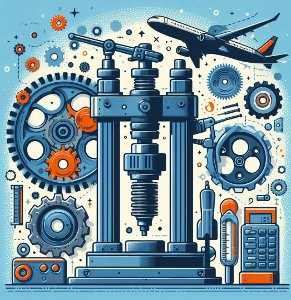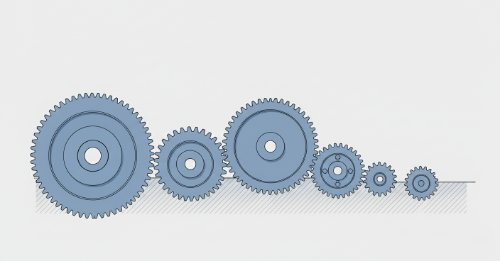Introduction - Method of Lagrange's Equations | Introduction to Dynamic Systems and Vibration - Engineering Mechanics (Undergraduate Advanced)
SPONSORED Get Personalized Tutoring NowStruggling with a tough concept or looking to advance your skills? Our expert tutors offer one-to-one guidance tailored to your unique needs.
Get instant support, clear explanations, and practical strategies to master even the most challenging subjects. With flexible scheduling and customized learning plans, success is just a session away.
Book your personalized tutoring today and start achieving your academic goals!
Get Personalized Tutoring NowStruggling with a tough concept or looking to advance your skills? Our expert tutors offer one-to-one guidance tailored to your unique needs.
Get instant support, clear explanations, and practical strategies to master even the most challenging subjects. With flexible scheduling and customized learning plans, success is just a session away.
Book your personalized tutoring today and start achieving your academic goals!
Struggling with a tough concept or looking to advance your skills? Our expert tutors offer one-to-one guidance tailored to your unique needs. Get instant support, clear explanations, and practical strategies to master even the most challenging subjects. With flexible scheduling and customized learning plans, success is just a session away. Book your personalized tutoring today and start achieving your academic goals!
 Introduction to Dynamic Systems and Vibration - Engineering Mechanics (Undergraduate Advanced)This course teaches the fundamentals of dynamic systems modelling and simulation. You will learn how to:
- Define and classify static and dynamic systems by their mathematical models
- Use differential equations, transfer functions, and state-space models to describe the behavior of dynamic systems
- Analyze the stability, controllability, and observability of dynamic systems
- Model and simulate translational, rotational, electrical, electromechanical, hydraulic, and thermal systems
- Draw analogies between different types of systems and exploit their similarities
- Use popular software tools such as MATLAB/SIMULINK to implement and test your models
By the end of the course, you will have a solid foundation in dynamic systems modelling and simulation, and you will be able to apply it to your own projects and interests. You will also gain a valuable skill that is in high demand in many industries and disciplines, such as:
- Engineering: design, control, and optimization of dynamic systems such as robots, vehicles, machines, power systems, etc.
- Science: understanding and prediction of natural phenomena such as population dynamics, climate change, epidemics, etc.
- Economics: modelling and analysis of economic systems such as markets, supply chains, production, consumption, etc.
- Policy: evaluation and improvement of policy actions and interventions in complex social systems such as health, education, environment, etc.
Whether you are a student, a professional, or a hobbyist, this course will help you master the art and science of dynamic systems modelling and simulation, and open up new possibilities for your learning and career.
Once enrolled, you have access to dynamic video lessons, interactive quizzes, and live chat support for an immersive learning experience. You engage with clear video explanations, test your understanding with instant-feedback quizzes and interact with our expert instructor and peers in the chat room. Join a supportive learning community to exchange ideas, ask questions, and collaborate with peers as you master the material, by enrolling right away.
Introduction to Dynamic Systems and Vibration - Engineering Mechanics (Undergraduate Advanced)This course teaches the fundamentals of dynamic systems modelling and simulation. You will learn how to:
- Define and classify static and dynamic systems by their mathematical models
- Use differential equations, transfer functions, and state-space models to describe the behavior of dynamic systems
- Analyze the stability, controllability, and observability of dynamic systems
- Model and simulate translational, rotational, electrical, electromechanical, hydraulic, and thermal systems
- Draw analogies between different types of systems and exploit their similarities
- Use popular software tools such as MATLAB/SIMULINK to implement and test your models
By the end of the course, you will have a solid foundation in dynamic systems modelling and simulation, and you will be able to apply it to your own projects and interests. You will also gain a valuable skill that is in high demand in many industries and disciplines, such as:
- Engineering: design, control, and optimization of dynamic systems such as robots, vehicles, machines, power systems, etc.
- Science: understanding and prediction of natural phenomena such as population dynamics, climate change, epidemics, etc.
- Economics: modelling and analysis of economic systems such as markets, supply chains, production, consumption, etc.
- Policy: evaluation and improvement of policy actions and interventions in complex social systems such as health, education, environment, etc.
Whether you are a student, a professional, or a hobbyist, this course will help you master the art and science of dynamic systems modelling and simulation, and open up new possibilities for your learning and career.
Once enrolled, you have access to dynamic video lessons, interactive quizzes, and live chat support for an immersive learning experience. You engage with clear video explanations, test your understanding with instant-feedback quizzes and interact with our expert instructor and peers in the chat room. Join a supportive learning community to exchange ideas, ask questions, and collaborate with peers as you master the material, by enrolling right away.
This course teaches the fundamentals of dynamic systems modelling and simulation. You will learn how to: - Define and classify static and dynamic systems by their mathematical models - Use differential equations, transfer functions, and state-space models to describe the behavior of dynamic systems - Analyze the stability, controllability, and observability of dynamic systems - Model and simulate translational, rotational, electrical, electromechanical, hydraulic, and thermal systems - Draw analogies between different types of systems and exploit their similarities - Use popular software tools such as MATLAB/SIMULINK to implement and test your models By the end of the course, you will have a solid foundation in dynamic systems modelling and simulation, and you will be able to apply it to your own projects and interests. You will also gain a valuable skill that is in high demand in many industries and disciplines, such as: - Engineering: design, control, and optimization of dynamic systems such as robots, vehicles, machines, power systems, etc. - Science: understanding and prediction of natural phenomena such as population dynamics, climate change, epidemics, etc. - Economics: modelling and analysis of economic systems such as markets, supply chains, production, consumption, etc. - Policy: evaluation and improvement of policy actions and interventions in complex social systems such as health, education, environment, etc. Whether you are a student, a professional, or a hobbyist, this course will help you master the art and science of dynamic systems modelling and simulation, and open up new possibilities for your learning and career. Once enrolled, you have access to dynamic video lessons, interactive quizzes, and live chat support for an immersive learning experience. You engage with clear video explanations, test your understanding with instant-feedback quizzes and interact with our expert instructor and peers in the chat room. Join a supportive learning community to exchange ideas, ask questions, and collaborate with peers as you master the material, by enrolling right away.
 MEE 206: Engineering Mechanics - DynamicsMaster the principles governing the motion of engineering systems. This learning track provides a complete education in dynamics, systematically building from the kinematics of particles to the kinetics of rigid bodies and culminating in an introduction to dynamic systems and vibration. You will learn to analyse and predict how mechanical systems behave under the influence of forces.
This programme is for undergraduate students in mechanical, aerospace, civil, or related engineering disciplines. It is also essential for practising engineers and applied scientists who require a rigorous, first-principles command of dynamic analysis for their professional work. A prerequisite knowledge of statics, calculus, and vector algebra is assumed.
Upon completion, you will possess the analytical tools to solve complex dynamics problems for particles and rigid bodies using force, energy, and momentum methods. This provides the essential foundation for advanced study in mechanical design, control systems, and structural analysis, and prepares you for demanding technical roles in the engineering sector.
MEE 206: Engineering Mechanics - DynamicsMaster the principles governing the motion of engineering systems. This learning track provides a complete education in dynamics, systematically building from the kinematics of particles to the kinetics of rigid bodies and culminating in an introduction to dynamic systems and vibration. You will learn to analyse and predict how mechanical systems behave under the influence of forces.
This programme is for undergraduate students in mechanical, aerospace, civil, or related engineering disciplines. It is also essential for practising engineers and applied scientists who require a rigorous, first-principles command of dynamic analysis for their professional work. A prerequisite knowledge of statics, calculus, and vector algebra is assumed.
Upon completion, you will possess the analytical tools to solve complex dynamics problems for particles and rigid bodies using force, energy, and momentum methods. This provides the essential foundation for advanced study in mechanical design, control systems, and structural analysis, and prepares you for demanding technical roles in the engineering sector.
Master the principles governing the motion of engineering systems. This learning track provides a complete education in dynamics, systematically building from the kinematics of particles to the kinetics of rigid bodies and culminating in an introduction to dynamic systems and vibration. You will learn to analyse and predict how mechanical systems behave under the influence of forces. This programme is for undergraduate students in mechanical, aerospace, civil, or related engineering disciplines. It is also essential for practising engineers and applied scientists who require a rigorous, first-principles command of dynamic analysis for their professional work. A prerequisite knowledge of statics, calculus, and vector algebra is assumed. Upon completion, you will possess the analytical tools to solve complex dynamics problems for particles and rigid bodies using force, energy, and momentum methods. This provides the essential foundation for advanced study in mechanical design, control systems, and structural analysis, and prepares you for demanding technical roles in the engineering sector.